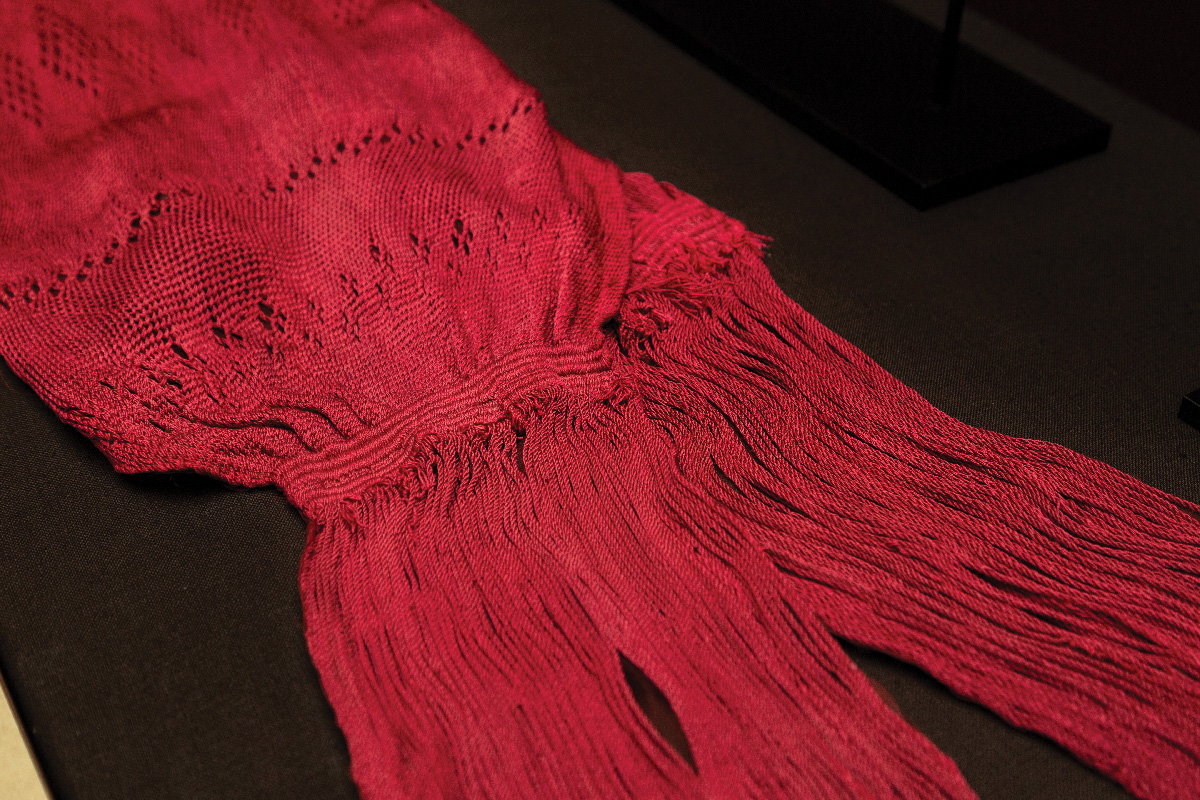NEWS

Silk Sash and Sword on Exhibit
The Symbols of Rank exhibition, now on view in the Museum, explores the symbolism of the accoutrements and sword featured in Charles Willson Peale’s 1772 portrait, George Washington as Colonel of the Virginia Regiment, currently on loan from Washington and Lee University. Until May 10, 2020, visitors will have the rare opportunity to see Washington’s original silk officer’s sash. Because of the delicate nature of the sash, a reproduction sash will be on view as a part of the exhibit from May 11 to September 30, 2020.
The silk sash is one of several officer’s sashes that Washington owned. Made using a technique called “sprang weaving,” silk sashes had enormous strength and could be used as stretchers to carry wounded officers off the battlefield.
Washington purchased a “Rich Crimson” officer’s sash from London in 1754 and likely wore it through much of the French and Indian War. In July 1755, the mortally wounded General Edward Braddock gave Washington his own officer’s sash. In 1774, on the eve of the Revolution, as commander of several independent militia companies, Washington ordered a new officer’s sash from Philadelphia. When he took command of the Continental Army, he stopped wearing this type of sash, creating instead a new system of rank designation for the nation’s army.
Paired with the sash for this special exhibition is Washington’s silver smallsword. Charles Willson Peale carefully replicated the hilt of the sword in his portrait of Washington. Smallswords were elements of civilian attire, worn both indoors and out, by virtually every 18th-century male of genteel social status. This is traditionally believed to be the sword worn by Washington on two key ceremonial occasions: the resignation of his military command in 1783 and his inauguration as president in 1789.
Both the smallsword and the sash came back to Mount Vernon through the generosity of the wealthy Morgan family. John Pierpont Morgan, Sr., donated the sword to Mount Vernon in 1909, while his son, John Pierpont Morgan, Jr., presented the sash in 1924.
Also appearing in the exhibit are a miniature version of Peale’s 1772 portrait, painted by Anson Dickinson, ca. 1850; a gorget (the silver crescent-shaped neckpiece similar to the one in the painting); and a silver officer’s cockade insignia, ca. 1799, ordered by Washington during the Quasi-War with France.